The day I mailed my quilt show forms, I received my order of hand-dyed crochet thread from Sara's Colorwaves. I needed a brief respite from quilting, and the new thread was so beautiful, the bright colors inspired this snowflake. I began this snowflake as soon as I got home from work, and it took five days to finish two snowflakes and write this pattern.
El Diente, which is Spanish for "The Tooth," is one of three 14ers in the Lizard Head Wilderness, and yes, that's the real name of the wilderness area west of Telluride. I'm not making this up! Because of the
The nearly mile-long ridge connecting 14,159-foot El Diente to 14,246-foot Mount Wilson is a dangerous, challenging and difficult traverse and a very bad place to be during an electrical storm but a recommended training climb in preparation for such routes as Matterhorn, Ama Dablam and Mount Kenya (minus the electrical storms, of course). A sentimental favorite of many mountain climbers, El Diente is considered one of the five most difficult of Colorado's 14ers to climb.
Another reason El Diente is a good name for this snowflake: it's a sentimental favorite of mine because of the difficulty as well as its unique splendor when worked in two colors.
You may do whatever you'd like with snowflakes you make from this pattern, but you may not sell or republish the pattern. Thanks, and enjoy!

Finished Size: 10 inches from point to point
Materials: Size 10 crochet thread in two contrasting colors (I used black and bright rainbow for the first flake and white and light blue for the second), size 7 and size 8 crochet hooks, empty pizza box, wax paper or plastic wrap, cellophane tape, glue, water, glitter, small container for glue/water mixture, paintbrush, stick pins that won't be used later for sewing, clear thread or fishing line NOTE: I did not glitter the black snowflake.

Instructions
Make magic ring.
Round 1: With main color and size 8 crochet hook, ch 2 (does not count as dc), 12 dc in ring; st st in starting dc. Pull magic circle tight.
Round 2: Ch 2 (does not count as dc), 2 dc in each dc around for total of 24; sl st in starting dc; bind off.

Round 3: With accent color, 1 sc in any dc, 3 sc in next dc, 1 sc in next dc, draw up loop in bottom of next dc, yo and draw through both loops on hook (drop sc made), *1 sc in next dc, 3 sc in next dc, 1 sc in next dc, 1 drop sc in bottom of next dc; repeat from * around 4 times; sl st in starting sc; bind off. NOTE: Ending here makes a cute little snowflake or jewelry charm. If you make two that match, you'll have an excellent pair of earrings.
Round 4: With main color, 1 sc in any drop sc, 1 sc in next sc, 1 hdc in next sc, 3 dc in next sc, 1 hdc in next sc, 1 sc in next sc, *1 sc in next drop sc, 1 sc in next sc, 1 hdc in next sc, 3 dc in next sc, 1 hdc in next sc, 1 sc in next sc; repeat from * around 4 times; sl st in starting sc. If you're not reading this pattern on Snowcatcher, you're not reading the designer's blog. Please go here to see the original.
Round 5: Ch 1 (does not count as sc), 1 sc in same st as last sl st, 1 sc in each of next 2 st, *1 hdc in next st, 5 dc in next st, 1 hdc in next st, 1 sc in each of next 5 st; repeat from * around 5 times, ending with 1 sc in each of next 2 st instead of 5 sc on final repeat; sl st in starting sc; bind off.
Round 6: With accent color, 1 sc in any 4th dc of 5/dc group, 1 sc in next st, *1 drop sc in 3rd sc of accent 3/sc group below, draw up loop in each of next 3 sc (in middle 3 sc of 5/sc group), yo and draw through all 4 loops on hook (dec made), 1 drop sc in 1st sc of next accent 3/sc group below; 1 sc in each of next 2 dc, 1 hdc in next st (in middle dc of 5/dc group), 1 dc in same st, ch 14, [[[1 sc in 2nd ch from hook (sc tip made)]]], 1 hdc in next ch, 1 dc in next ch, 1 hdc in next ch, 1 sc in each of next 3 ch, 1 dc in each of next 2 ch, 1 tr in next ch, 1 dc in next ch, 1 hdc in next ch, 1 sc in final ch, 1 dc in same st as dc prior to ch 14, 1 [hdc] in same st, [[1 sc in each of next 2 st]]; repeat from * around 5 times ending with [hdc] on final repeat instead of 2 sc; sl st in starting sc; bind off. NOTE: If you chain tightly (as I do), consider using a hook one size larger (I used size 7) for just the ch 14 sections on this round in order for the spokes to lay flat and be even on each side, as well as make the stitches easier to work into on the next round.
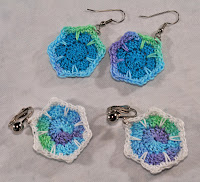
Round 7: With main color, 1 sc in any [[1st sc of 2/sc group]] (left side of spoke), 1 sc in each of next 20 st; *in [[[sc tip]]] work {1 sc, 1 hdc, 1 dc, ch 6, 1 sc in 2nd ch from hook, 1 hdc in next ch, 1 dc in next ch, 1 hdc in next ch, 1 sc in final ch, 1 dc, 1 hdc and 1 sc}, 1 sc in each of next 35 st; repeat from * around 5 times; 1 sc in each of next 14 st; sl st in starting sc.
Round 8: Ch 1 (does not count as sc), 1 sc in same st as sl st; 1 sc in each of the next 9 st, ch 1, sk 2 st, in next st work [1 dc, ch 1] 3 times, sk 2 st, 1 in each of next 2 st, [ch 2, sk 1 st, 1 dc] 6 times to [[[tip]]], ch 2, in tip work {1 tr, ch 2, 1 dtr, ch 2, 1 tr, ch 2, 1 dc}, ch 2, [sk 1 st, 1 dc in next st (make sure directly across from dc on opposite side), ch 2] 4 times, sk 1 st, 2 sc in next st (make sure directly across from 2 sc on opposite side), ch 1, sk 2 st, in next st work {1 dc, ch 1} 3 times (make sure directly across from same sequence on opposite side), sk 2 st, 1 sc in next st (make sure directly across from sc on opposite side), 1 sc in each of next 12 st; repeat 5 times, ending with 1 sc in each of the next 3 st instead of 12 sc on final sequence; sl st in starting sc. NOTE: On the left side of each spoke, counting stitches is not as critical as optically making the stitches mirror the right side. If the correct count doesn't place the dc directly across from the same st on the other side, adjust placement to line up the stitches. As long as you have the same number of chain spaces on each side of the spoke, the final row will work out, even if you've had to adjust stitch placement.
Round 9: Ch 1 (does not count as sc), 1 sc in each of next 10 st, [2 sc in each ch 1 sp] 4 times, sk 2 sc, 3 sc in next ch 2 sp, 5 dc in next ch 2 sp, 3 sc in next ch 2 sp, 3 dc next ch 2 sp, ch 2, sl st in top of dc, 2 dc in same ch 2 sp, [3 sc in next ch 2 sp] 2 times, in next ch 2 sp work [1 sc, 1 hdc, 1 dc]; 3 dc in next ch 2 sp, ch 4, sl st in 2nd ch from hook, 1 hdc in next ch, 1 dc in next ch; in next ch 2 sp work 3 dc; in next ch 2 sp work [1 dc, 1 hdc, 1 sc], [3 sc in next ch 2 sp] 2 times, in next ch 2 sp work [3 dc, ch 2, sl st in top of dc, 2 dc in same sp], in next ch 2 sp work 3 sc, in next ch 2 sp work 5 dc, in next ch 2 sp work 3 sc, sk 2 sc, 2 sc in each of next 4 ch 1 sp; sk next sc, 1 sc in each of next 12 sc; repeat from * around 5 times, ending with 1 sc in final st of round instead of 12 sc on final repeat; bind off. Weave in ends.
Finish: Tape wax paper or plastic wrap to top of empty pizza box. Pin snowflake to box on top of wax paper or plastic wrap.
Mix a few drops of water with a teaspoon of glue in small washable container. Paint snowflake with glue mixture. Sprinkle lightly with glitter. Wash paintbrush and container thoroughly. Allow snowflake to dry at least 24 hours. Remove pins. Gently peel snowflake from wax paper or plastic wrap. Attach 10-inch clear thread to one spoke, weaving in end. Wrap fishing line around tree branch (or tape to ceiling or any overhead surface) and watch the snowflake twirl freely whenever you walk by! Snowflake also may be taped to window or tied to doorknob or cabinet handle.






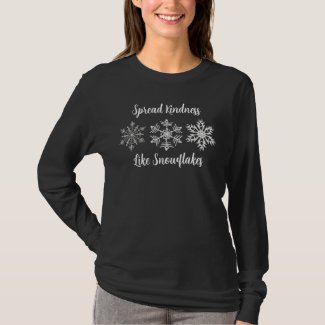
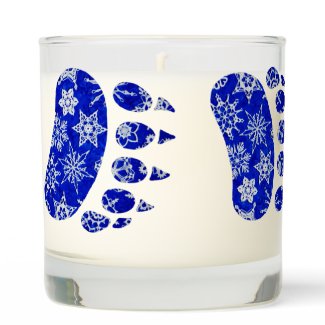
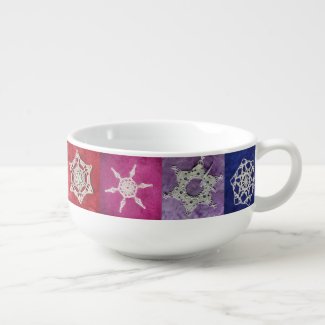

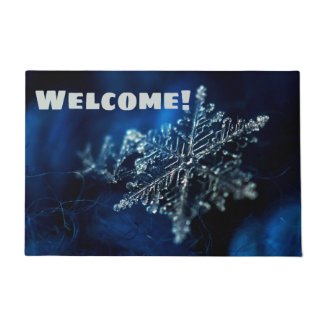
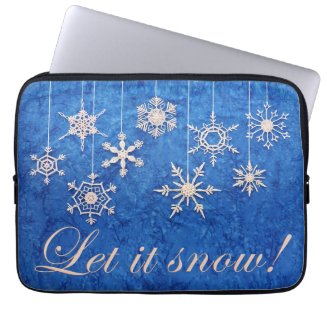
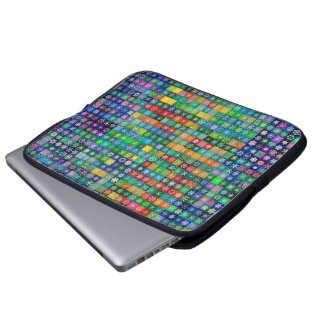
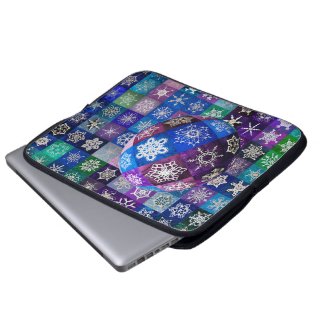















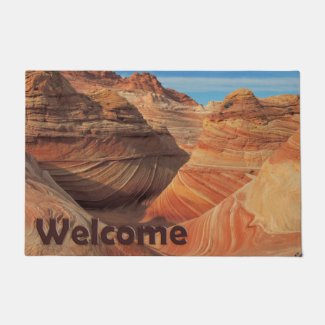
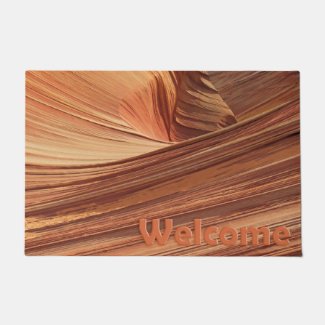

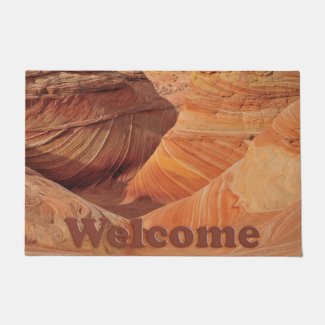
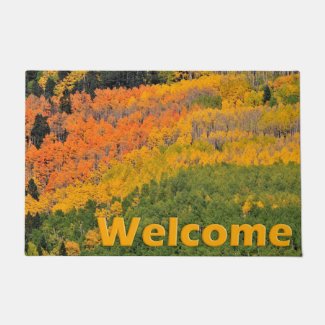
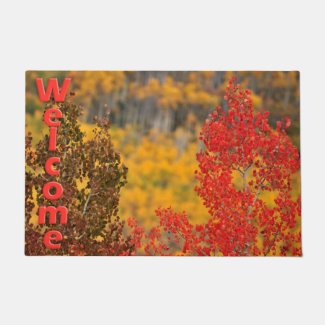
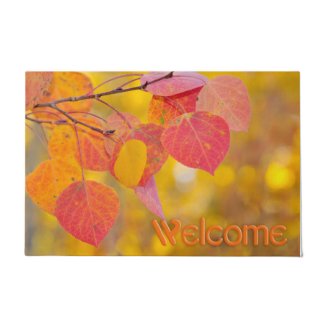
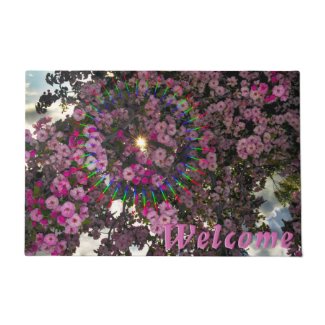
Oh dear, the black/colored looks great.
ReplyDeleteOMG! The black one is absolutely beautiful! Once I saw the black one, the light bulb went off above my head :) These would be beautiful on my white Xmas tree! I can't wait to get started!
ReplyDeleteOh my...this one really is SOMETHING. They're all beautiful your snowflakes but this one is exceptional. Well done and thanks for sharing.
ReplyDeleteWhat Dita said.
ReplyDeleteRenee :)
they are soooo pretty.
ReplyDeleteyou are really creative and talented :) thank you for sharing!
They are beautiful! I so look forward to Mondays! Those earrings would have been fun for the Beatles party I just had. I will make them next year for our Elvis party.
ReplyDeleteGreat pictures. WOW I need to start on snowflakes if I am going to have enough for Christmas cards this year. Thanks for sharing.
ReplyDeleteI didn't think you could out-do yourself anymore than you have....but you did. You just keep on going [like that little bunny!]
ReplyDeleteI have never seen such a beautiful and breathtaking snowflake. It is well deserving of the name El Diente.
I love those mountains and I am glad there are no snowflakes on them. :)
ReplyDeleteso loving the black with a colorful center. very cool.
ReplyDeleteI love the white one with the blue center... they're all so intricate, so completely different.
ReplyDeleteI dearly love the colors shot through the center of your snowflakes. Just beautiful. But you caught my eye with the mountain picture in your quilt. What exactly do you use to print your pictures on fabric? And where do you get it? Inquiring minds ...
ReplyDeleteThank you everyone! This is one of my favorites, too!
ReplyDeleteJAC, it's coming! It's coming! I plan to publish the recipe, and I'll provide links to all the ingredients!
Gorgeous pattern! And I love the quilt too.
ReplyDeleteThe snowflake is absolutely beautiful, I especially like the black one
ReplyDelete